|
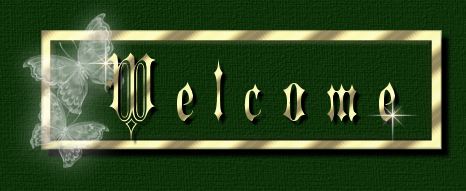
Happy St. Patrick's Day
From the Jersey Cats Emporium

It's a grand day for the Irish

It's a grand day for the Irish
and a grand day for me too.
It's all been grand since that
first day that I've been blessed
with a friend like you.

Happy St. Patrick's day from Sammy and Aurora
It's a grand day for the Irish
and a grand day for me too.
It's all been grand since that
first day that I've been blessed
with a friend like you.
Closeup of Sammy on scatching post

This is Sammy's
baby picture, wasn't he a cute
little kitty???!!!!
BABY Sammy

Thanks for stopping by our Home Page. This is the web
site for Sammy and Aurora. We want to tell you all
about ourselves, our clubs, our friends, and our
interests. We also have set up a memorial page
for the other kitties who have gone on to the Rainbow
Bridge. Hope you will enjoy visiting
us!!! Please sign our guest book
below. Feel free to e-mail us with any
comments. Thanks for visiting us!!!!!

Here is our Navigation Bar to get around our site:
"Meowmie Aurora"
 
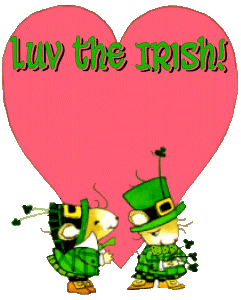

MacNamara's Band
Oh, me name is MacNamara, I'm the leader of the band
Although we're few in numbers, we're the finest in the land
We play at wakes and weddings, and all the fancy balls
And when we play the funerals, you know we'll give our all!
Oh, the drums go bang and the cymbals clang
And the horns they blaze away
McCarthy pumps the old bassoon while I the pipes do play
And Henessee Tennessee tootles the flute
And the music is somethin' grand
A credit to old Ireland is MacNamara's band
Right now we are rehearsin' for a very swell affair
The annual celebration, all the gentry will be there
When General Grant to Ireland came he took me by the hand
Says he, "I never saw the likes of MacNamara's Band"
Oh, the drums go bang and the cymbals clang
And the horns they blaze away
McCarthy pumps the old bassoon while I the pipes do play
And Henessee Tennessee tootles the flute
And the music is somethin' grand
A credit to old Ireland is MacNamara's band
Oh, my name is Uncle Julius and from Sweden I did come
To play with MacNamara's Band and beat the big bass drum
And when I march along the street the ladies think I'm grand
They shout, "There's Uncle Julius playin' with an Irish band!"
Oh, I wear a bunch of shamrocks and a uniform of green
And I'm the funniest lookin' Swede that you have ever seen
There is O'Brians, O'Ryans, O'Sheehans and Meehans,
They come from Ireland
But, by yimminy, I'm the only Swede in MacNamara's Band
Oh, the drums go bang and the cymbals clang
And the horns they blaze away
McCarthy pumps the old bassoon while I the pipes do play
And Henessee Tennessee tootles the flute
And the music is somethin' grand
A credit to old Ireland is MacNamara's band
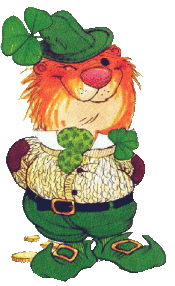


 

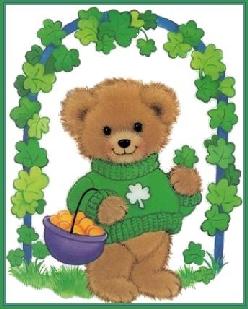

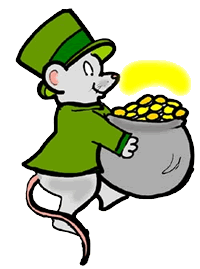
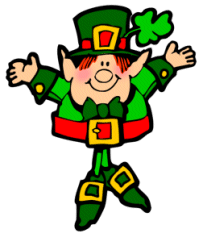
 
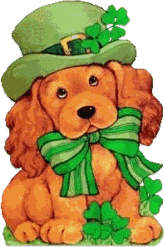
Faith & Begoure Yah..Happy St. Paddy's day!




May your thoughts be as
glad as the shamrocks
May your heart be as light as
a song
May each day bring you brright
happy hours.
That stay with you all the
year long.
Wishing you God's blessings
and a happy
Saint Patrick's Day!
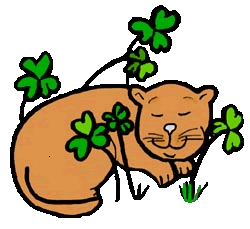
    
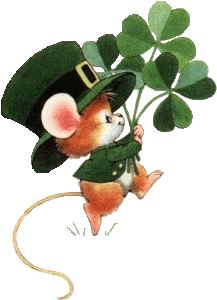
History of St. Patrick
The person who was to become St. Patrick, the patron saint of Ireland,
was born in Wales about AD 385. His given name was Maewyn.
When he was 16, he was sold into slavery to Ireland where he was a shepherd
for 6 years. While in captivity he studied and turned to religion. He escaped
slavery and later returned to Ireland as a missionary, determined to convert
Ireland to Christianity. He used the shamrock to explain the Holy Trinity.
Patrick was quite successful at winning converts. And this fact upset the Celtic
Druids. Patrick was arrested several times, but escaped each time. He traveled
throughout Ireland, establishing monasteries across the country. He also set up
schools and churches which would aid him in his conversion of the Irish country
to Christianity.
His mission in Ireland lasted for thirty years. After that time, Patrick retired
to County Down. He died on March 17 in 461 A.D. That day has been com-
memorated as St. Patrick's Day ever since.
Much Irish folklore surrounds St. Patrick's Day. Not much of it is actually
substantiated. Some of this lore includes the belief that Patrick raised people
from the dead. He also is said to have given a sermon from a hilltop that drove
all the snakes from Ireland. Though originally a Catholic holy day, St. Patrick's
Day has evolved into more of a secular holiday.
One traditional symbol of the day is the shamrock. And this stems from a more
bona fide Irish tale that tells how Patrick used the three-leafed shamrock to
explain the Trinity. He used it in his sermons to represent how the Father, the
Son, and the Holy Spirit could all exist as separate elements of the same entity.
His followers adopted the custom of wearing a shamrock on his feast day.
The holiday, March 17th, is marked by parades in cities across the United States.
The largest of these, held since 1762, is in New York City, and draws more than
one million spectators each year. In Ireland, it is a religious holiday similar
to Christmas and Easter.
|
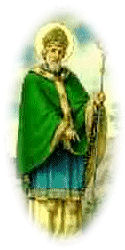
More About St. Patrick:
|
Saint Patrick, was said to have used the three-leafed shamrock to illustrate the Holy
Trinity. He explained in his sermons that the clover represented how the Father, the
Son, and the Holy Spirit were all separate parts of a single entity. His followers
adopted the custom of wearing a shamrock on his feast day, March 17.
Wearing Of The Green:
Legends tell of the young Bishop Saint Patrick, who plucked a simple, humble shamrock
from the ground somewhere on the lush green hillsides of County Armagh back in the
year 432 AD. He used it to explain the Mystery of the Blessed Trinity to the Ancient
High Kings of Ireland, making the Shamrock an important symbol as Ireland's
National Emblem. It is also said that Saint Patrick drove the snakes from Ireland into
the sea. St. Patrick is named the patron Saint for bringing Christianity to Ireland, and
introducing the Irish people to Baptism.
That is why March 17th is now celebrated as the "Feast Day Of Saint Patrick", when
Irish people from all over the world traditionally wear the shamrock on their chests,
hence the phrase "The Wearing Of The Green". Saint Patrick's death on March 17, in
about 461, has been observed in America since colonial days.
IRISH BLESSINGS FOR YOU

May you always have...
Walls for the wind
A roof for the rain
Tea beside the fire
Laughter to cheer you
Those you love near you
And all your heart might
Desire
|
|

More History and Legends about Saint Patrick
True history and legend are intertwined when it comes to St. Patrick.
There are many arguments over whether he was born in Wales, England
or Scotland but at the time of his birth these places did not yet exist
and the country was called Briton and was under Roman rule and latin was
the language. His parents were also Roman so his given name was actually
Patricus. Eventually he was ordained as a deacon, then priest and finally
as a bishop. Pope Celestine then sent him back to Ireland to preach the
gospel. Evidently he was a great traveller, especially in Celtic countries,
as innumerable places in Brittany, Cornwall, Wales, Scotland and Ireland
are named after him. Here it is where actual history and legend become
difficult to separate.
Patrick is most known the world over for having driven the snakes from
Ireland. Different tales tell of his standing upon a hill, using a wooden
staff to drive the serpents into the sea, banishing them forever from the
shores of Ireland. One legend says that one old serpent resisted, but the
saint overcame it by cunning. He is said to have made a box and invited
the reptile to enter. The snake insisted the box was too small and the
discussion became very heated. Finally the snake entered the box to prove
he was right, whereupon St. Patrick slammed the lid and cast the box
into the sea. While it is true there are no snakes in Ireland, chances
are that there never have been since the time the island was seperated
from the rest of the continent at the end of the ice age. As in many
old pagan religions serpent symbols were common, and possibly even
worshipped. Driving the snakes from Ireland was probably symbolic of
putting an end to that pagan practice.
While not the first to bring Christianity to Ireland, it was Patrick
who encountered the Druids at Tara and abolished their pagan rites.
He converted the warrior chiefs and princes, baptizing them and
thousands of their subjects in the Holy Wells which still bear that name.
According to tradition St. Patrick died on 17 March in A.D. 493 and
was buried in the same grave as St. Bridget and St. Columba, at
Downpatrick, County Down. The jawbone of St. Patrick was preserved
in a silver shrine and was often requested in times of childbirth,
epileptic fits and as a preservative against the evil eye. Another
legend says St. Patrick ended his days at Glastonbury and was buried
there. The Chapel of St. Patrick still exists as part of Galstonbury
Abbey. There is evidence of an Irish pilgrimage to his tomb during
the reign of the Saxon King Ine in A.D. 688, when a group of pilgrims
headed by St. Indractus were murdered.
The great anxiety displayed in the middle ages to possess the bodies,
or at least the relics of saints, accounts for a the many discrepant
traditions as to the burial places of St. Patrick and others.
The Life of St. Patrick is a more accurate, historical account of his
life, but it is a very long. For an account of St. Patrick's life
written by him you can go to Confession of St. Patrick which is
another long document.
This information is courtesy of : Ireland Now
|

     

 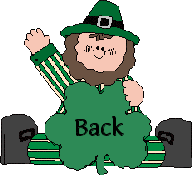



  
  
 

March 17, 2016
|
|
|
|
|
|
|